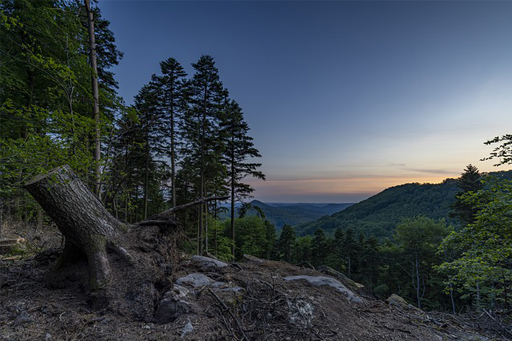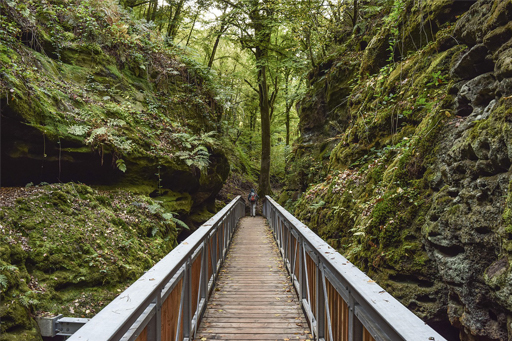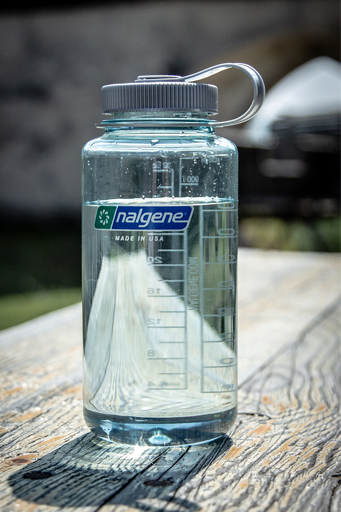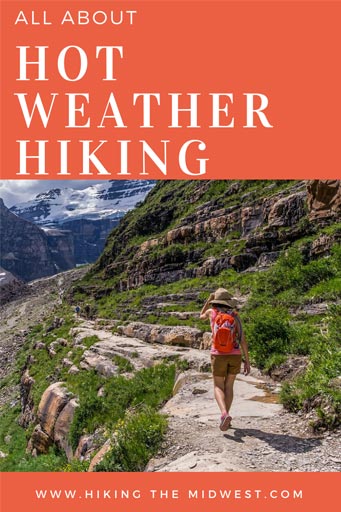As the sun blazes in the vast expanse of the sky, and the heat radiates from the earth beneath your feet, there’s something undeniably thrilling about embarking on a hiking expedition in scorching hot weather. While others seek shelter in air-conditioned havens, you, my intrepid adventurer, crave the exhilaration of conquering nature’s fiery challenge. But hold on tight, for hiking in hot weather is no ordinary feat—it demands preparation, resilience, and a thirst for adventure that knows no bounds. In this guide, we’ll unveil the secrets to turning scorching trails into unforgettable adventures, ensuring you emerge victorious, unscathed, and with memories that will ignite your soul for years to come.
Table of Contents
When to Go

Alright, fellow trailblazers, let’s talk about the secret sauce for hiking in scorching temperatures. It’s all about finding that sweet spot in time when the weather is a tad more forgiving. Trust me, it can make a world of difference!
Now, picture this: the crack of dawn, when the world is still yawning and stretching out from its slumber. It’s that magical moment to kick-start your adventure. Get those hiking boots on nice and early, or even plan for an evening escapade. Why, you ask? Well, my friend, starting your hike in the cool morning or late evening hours can save you from the wrath of the blazing sun. Plus, if you’re venturing into a trail that’s lacking in shady hideouts, this trick becomes a lifesaver. By the time the midday heat rolls around, you’ll be putting your feet up, sipping a refreshing drink, and feeling like an absolute champion.
But wait, there’s another wild card to throw into the mix: night hiking! Trust me, it’s a whole new level of adventure that’ll spice up your hiking repertoire. You’re surrounded by darkness, but the moon and stars (or your headlamp) become your guiding lights. The symphony of nocturnal creatures fills the air, and every step carries an electric thrill. Night hiking opens up a whole new perspective, and suddenly, those familiar trails become a mysterious wonderland waiting to be explored. So, why not give it a shot and experience nature in a whole new way?
Read: Hiking at Night
Where to Hike in Hot Weather

First things first, let’s talk shade. It’s like nature’s air-conditioning, and you definitely want to be best friends with it. Look for canyons that offer a cool respite, wooded trails with their leafy canopy providing a shield from the sun’s relentless rays, or even trails with handy shelters where you can take a breather. But here’s a nifty trick: if you find yourself in a spot with little to no shade, channel your inner Mary Poppins and hike with an umbrella! Yes, you heard me right. It may sound quirky, but trust me, that umbrella can be a lifesaver. Not only will it block the scorching sun, but it’ll also keep you a touch cooler than if you were basking in direct sunlight. It’s a stylish and practical solution rolled into one!
Now, let’s talk about the magical power of water. When the heat is relentless, seeking hikes near rivers, lakes, or quarries becomes an absolute no-brainer. Picture this: you’re trekking along a trail, feeling the sweat trickling down your forehead, when suddenly, you stumble upon a crystal-clear oasis. Dive right in! Take a refreshing dip, let the cool water wash away the heat, and rejuvenate your spirit. It’s like nature’s own cool-down station, and trust me, you’ll emerge from the water feeling like a brand-new hiker ready to conquer the world.
What to Wear Hiking in Hot Weather
Now, listen up: when it comes to what to wear hiking in scorching weather, less isn’t always more. While it may seem counterintuitive, opting for long sleeves and pants can be a game-changer. Not only do they shield your precious skin from the unforgiving UV rays, but they also provide an extra layer of defense against those pesky bug bites. So, grab that lightweight, breathable fabric and embrace the sun-protective power of long-sleeved shirts and pants.
Footwear matters too, my friends. Keep in mind that waterproof shoes or boots may limit breathability, trapping heat inside and leaving you feeling like a hot mess. To ensure maximum comfort, assess the trail and weather conditions, and go for the lightest and most breathable footwear that still offers the support and protection you need. Let your feet breathe and dance with the breeze!
Speaking of dancing with the breeze, it’s time to loosen up! Opt for looser-fitting clothing that allows air to flow freely and lets your body cool down naturally. Embrace the relaxed vibes and let that summer breeze be your partner on the trail.
Now, here’s a cool trick (literally): use a cooling towel or a water-soaked bandana around your neck. It’s like a personal oasis, providing instant relief and helping you beat the heat like a pro. And when it comes to fabric selection, my friends, moisture-wicking is the name of the game. Steer clear of cotton—it’ll leave you feeling sweaty, sticky, and downright uncomfortable. Instead, opt for moisture-wicking synthetics or merino wool to keep you dry and comfortable in those sizzling temperatures. Oh, and don’t forget about your feet! Choose moisture-wicking socks to keep blisters at bay, and be sure to pack an extra pair for emergencies. Blisters are no fun, and we definitely want to keep those pesky things at bay.
Last but certainly not least, protect that beautiful head of yours. Slap on a hat, my friends, and let it be your stylish shield against the scorching sun. Keep those rays at bay and keep your cool in check.
Staying Healthy in Hot Weather

First things first, let’s talk about the sizzling topic of sun protection. Oh, yes, my friends, it’s a biggie! When those hot, sunny days arrive, you need to arm yourself with the ultimate weapons: sunscreen and sunglasses. Slather on that magical SPF potion to shield your skin from the relentless UV rays, sparing yourself from the painful sunburn and potential long-term damage. And don’t forget those peepers! Sporting a pair of stylish sunglasses will not only make you look like a trail-savvy adventurer, but it will also shield your eyes from the bright glare and harmful sun rays. But wait, there’s more! Why not take it to the next level and rock a hat or even unleash your inner Mary Poppins with an umbrella? These nifty accessories will help you create your very own portable shade, giving you that extra layer of protection and a much-needed respite from the scorching sun.
Now, let’s chat about the importance of staying hydrated. Oh boy, staying hydrated is like giving your body a refreshing drink of life! During those hot hikes, the risk of heat exhaustion or even heat stroke is real, my friends. So, don’t mess around with your hydration game. Be sure to carry plenty of water with you and sip it regularly to replenish those precious fluids your body is losing through perspiration. Stay one step ahead of dehydration and keep that water bottle as your trusty sidekick on the trails.
Oh, and don’t forget to listen to your body! It’s like your hiking partner, giving you subtle hints and cues along the way. If you start feeling dizzy, fatigued, or unusually hot, it’s time to take a break and find some shade. Your body is your best hiking buddy, so pay attention to its signals and give it the care and rest it deserves.
Remember the golden rules of hot weather hiking: protect yourself from the sun’s rays with sunscreen, sunglasses, hats, and maybe even an umbrella; hydrate, hydrate, hydrate—water is your best friend out there on those sizzling trails; and always listen to your body, ensuring you take breaks and find shade when needed.
Heat Related Illness
Alright, fellow adventurers, let’s talk about some real-deal dangers that can lurk in the shadows of scorching hot weather. When the mercury rises, it’s vital to be aware of the potential hazards and arm yourself with knowledge to stay safe and thriving during your sun-soaked escapades. So, buckle up and let’s dive into the fascinating world of hot weather hiking pitfalls!
First on our list is the notorious villain known as dehydration. Picture this: the blazing sun, the relentless heat—it’s a recipe for water loss. When it’s extra hot out there, guzzling water becomes your secret weapon against dehydration. Amp up your hydration game by drinking more water than your regular routine to replenish the fluids your body is desperately losing. Stay one step ahead and give dehydration a serious beatdown!
But wait, there’s another sneaky adversary lurking around the corner: overhydration. Yes, my friends, too much of a good thing can sometimes be a bad thing. During those sweaty hikes, your body loses essential electrolytes, and that’s where salty snacks come to the rescue! Munch on those delicious salty treats to keep your electrolyte levels in check and maintain that delicate balance. And if you really want to level up, hydration tablets or electrolyte drinks can be your trusty sidekicks, helping you restore what’s lost and keep those energy levels soaring.
Now, let’s shine a spotlight on heat cramps, those pesky muscle spasms that can really put a damper on your adventure. They can strike anywhere in your body, but they seem to have a particular affinity for your calves, arms, and stomach. If you find yourself being ambushed by these cramps, seek refuge in a cool area and quench your thirst with water or electrolyte fluids. Remember, heat cramps are a sign that heat exhaustion might be lurking around the corner, so take it seriously and take the necessary steps to prevent further escalation.
Ah, the grand finale—the dreaded heat exhaustion. When your core temperature starts soaring to dangerous heights, your body sends out an SOS in the form of heat exhaustion. It’s like an internal alarm, signaling that your body’s cooling mechanisms are not working effectively. But fear not, my friends, for you hold the power to prevent this villain from wreaking havoc. Dressing appropriately for the heat and staying hydrated are your trusty shields against heat exhaustion’s fiery wrath. But should you encounter its symptoms—fatigue, dizziness, headache—listen to your body and take immediate action. Stop, find a cooler area, and rest your weary bones until you’re back in the game.
Signs of Heat Exhaustion
- Clammy skin
- Heavy sweating
- Dizziness or faintness
- Fatigue
- Weak, fast pulse
- muscle cramps
- Nausea
Heat Stroke The most serious of the 3 heat illnesses, results when your core temperature reaches 104 degrees Fahrenheit or higher and is a medical emergency that warrants calling 911.
Signs of Heat Stroke
- High body temperature of 104 degrees Fahrenheit or higher
- Confusion
- Slurred speech
- Seizures
- Nausea or vomiting
- Flushed skin
- Shallow, rapid breaths
- Fast heart rate
Related Posts
How to Sleep Cooler When Camping and Backpacking in the Heat
Avoid Mosquitoes When Hiking: The 3 tricks these tiny pests use to find you and how you can beat them at their own game
